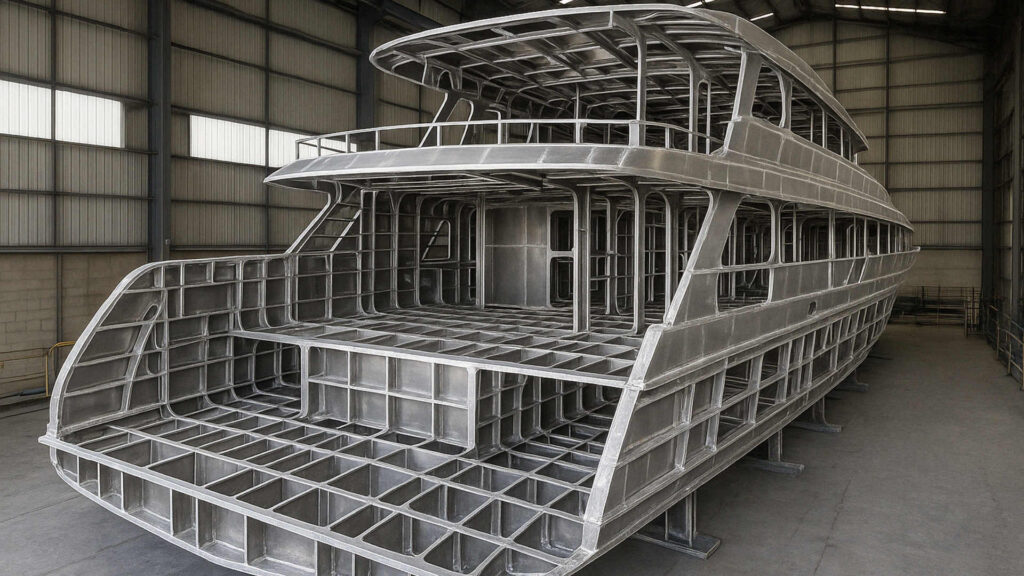Scantling

Structural design is the process of planning and defining the components, shape, dimensions, layout, and materials of a vessel’s structure to ensure it is strong, safe, and fit for purpose while also considering buildability, weight, cost, and performance.
Scantling determination refers to the process of calculating the detailed dimensions and specifications of a vessel’s structural elements. This includes the thickness, height, width, spacing, and material grade of components such as hull and deck panels, frames and ribs, beams and girders, bulkheads, and stringers.
Scantling determination can be approached through various methods:
- Rule-Based Methods (Empirical or Prescriptive)
They are based on standards and guidelines provided by classification societies (e.g., DNV, ABS, Lloyd’s Register) or international standards (e.g., ISO 12215).
- First-Principles Calculations (Analytical Methods)
It relies on classical engineering mechanics, including beam theory, plate theory, and stress analysis, to assess structural behavior. It allows for a more tailored design, especially for parts not fully addressed by rule-based methods.
- Finite Element Analysis (FEA)
FEA uses computational calculations and specialized software to simulate how structures respond to forces, pressure, and other environmental conditions. It offers high accuracy and is particularly suitable for complex geometries.
- Experimental and Prototype Testing
Primarily used for verification and certification, especially in unconventional or cutting-edge designs. This method involves building full-scale or scaled models and testing them under real or simulated loads.
- Hybrid Approaches
In real-world design, engineers often combine several methods: rule-based design for general structure, FEA or analytical methods for critical areas, and prototype testing for validation.
Would you like to learn more about the courses we offer on Scantling?
Note: The image included in this post is a conceptual visual representation and is not engineering-accurate.







